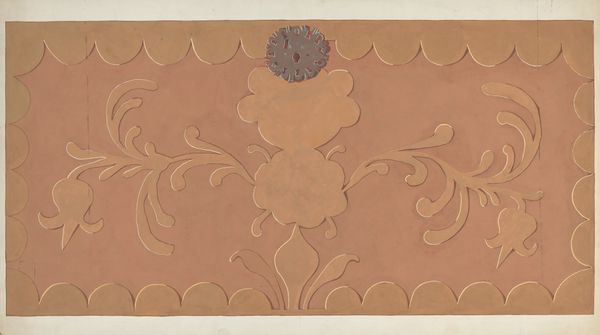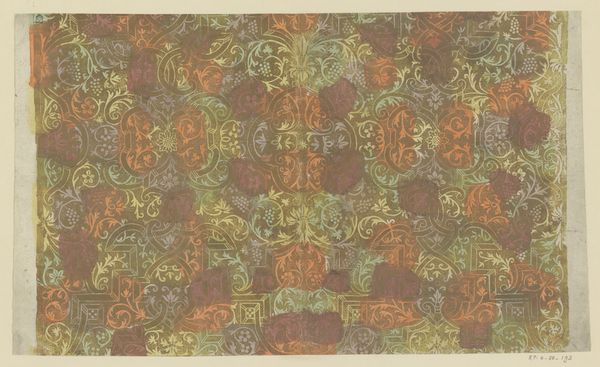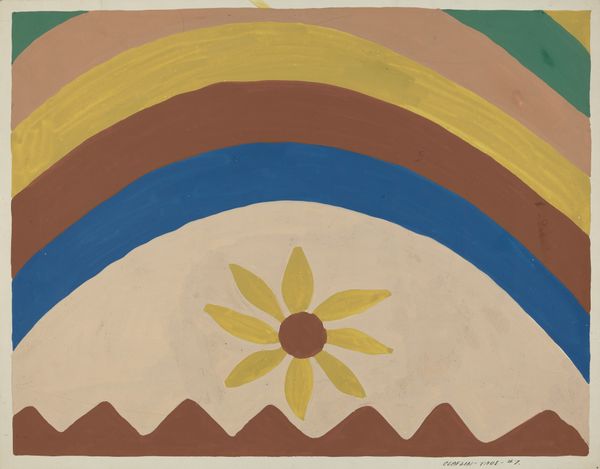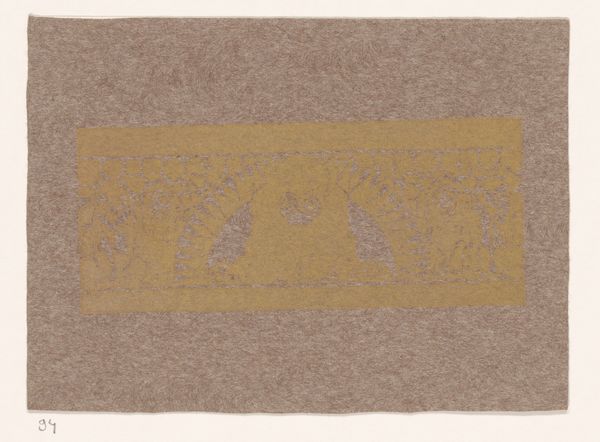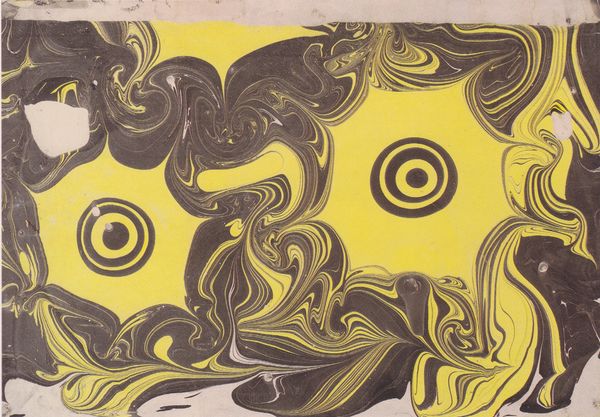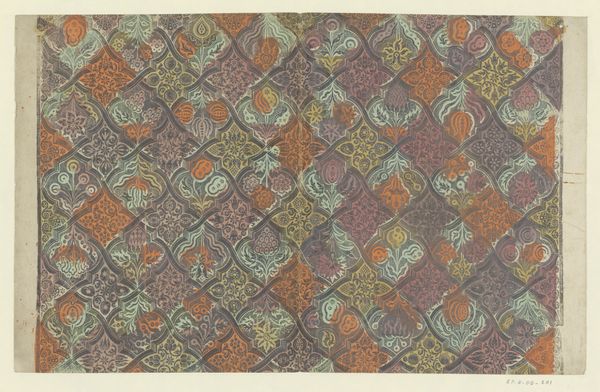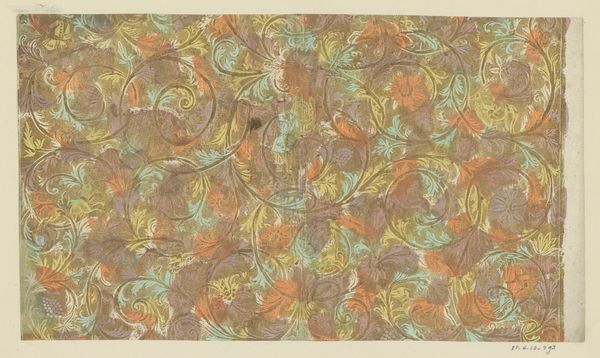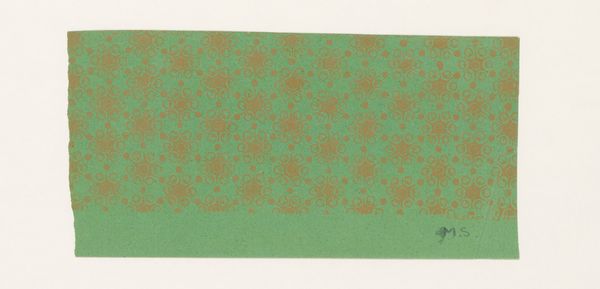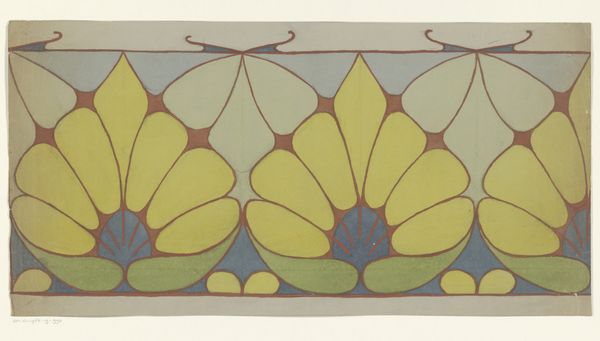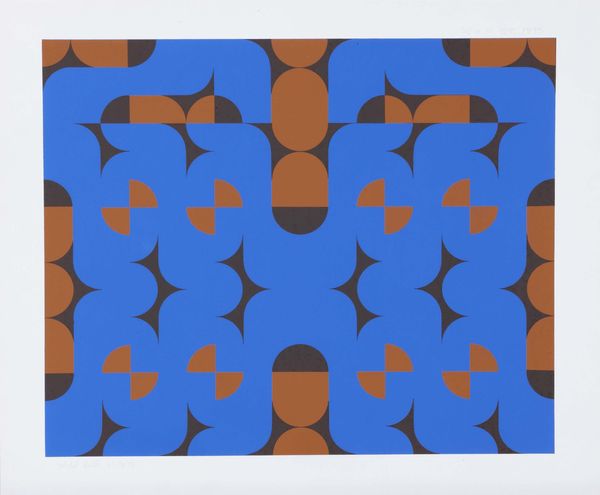
drawing
#
drawing
#
organic pattern
#
geometric
#
geometric-abstraction
#
abstraction
#
line
#
decorative-art
Dimensions: overall: 42.7 x 76 cm (16 13/16 x 29 15/16 in.) Original IAD Object: none given
Copyright: National Gallery of Art: CC0 1.0
Curator: It has a certain warmth, doesn't it? A subdued, quiet warmth. Editor: Indeed. This work, entitled "Painted Chest," dates back to 1942 and is by D.P. Jones. It's executed as a drawing. These geometric shapes and lines lend themselves nicely to that medium. I’m drawn to the subtle abstraction; it speaks volumes despite its visual simplicity. Curator: I’m especially interested in what an object like this, a decorated chest, communicates during that period. Is this a purely aesthetic exercise, or does it point to something deeper about the artist's socio-economic background or cultural affiliations during wartime? Does it offer some relief, a touch of beauty, against a backdrop of austerity and anxiety? Editor: That’s fascinating to consider. Focusing on the visual construction itself, I see a really intriguing interplay between the radial symmetry of the two large circular motifs and the somewhat quirky asymmetry introduced by the latch plate centered at the top and that squiggle off to the sides. The composition definitely possesses a dynamic tension. Curator: It is as if Jones is subtly subverting the expectation of perfect symmetry, perhaps as a way to subtly defy conformity during a period defined by very rigid societal expectations. The use of humble materials suggests limited resources and an intimate connection to place. We should look into whether or how decorative arts were promoted as a means of boosting morale on the homefront. Editor: Absolutely, and from a formal perspective, the restricted palette - this lovely peach paired with muted browns – creates an incredibly calming effect. Note also how the artist used these circular motifs that are a play with geometric and organic pattern to establish and fill the plane of the chest itself, which is visually compelling in itself. Curator: Well, this piece certainly highlights how seemingly simple artwork, when examined through a historical lens, reveals complex narratives about individuals and their lived experiences during transformative historical moments. Editor: And through formal qualities, the artist communicates these transformative historical moments within these pieces through its texture, line, color, and organization of shapes on a two-dimensional plane.
Comments
No comments
Be the first to comment and join the conversation on the ultimate creative platform.
